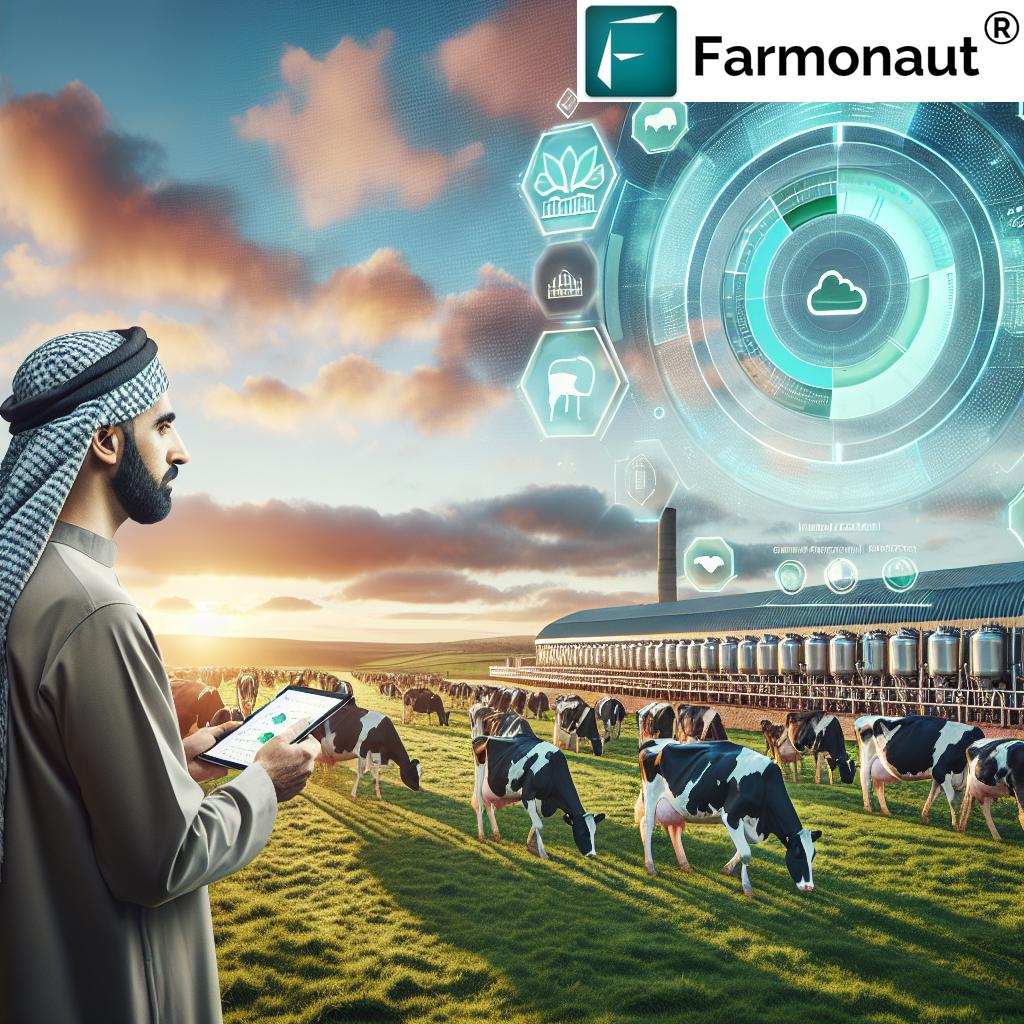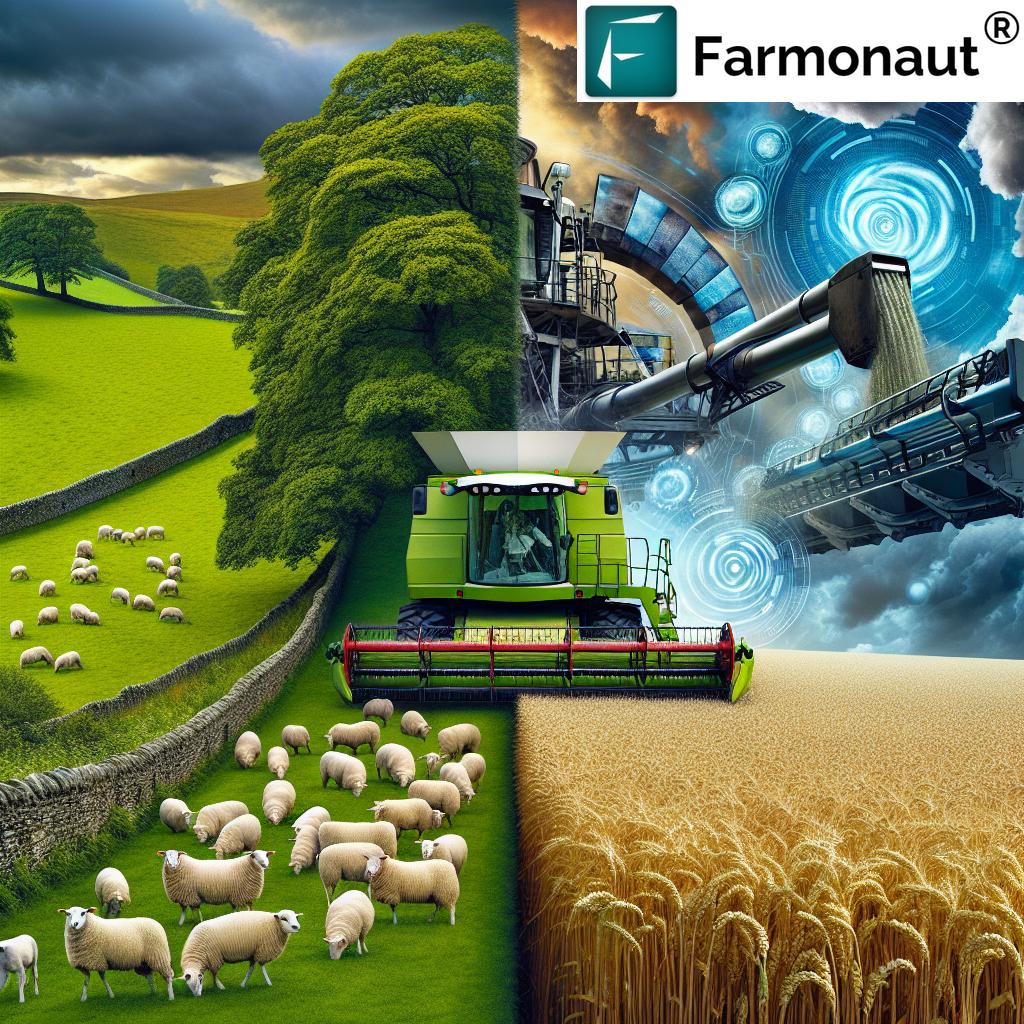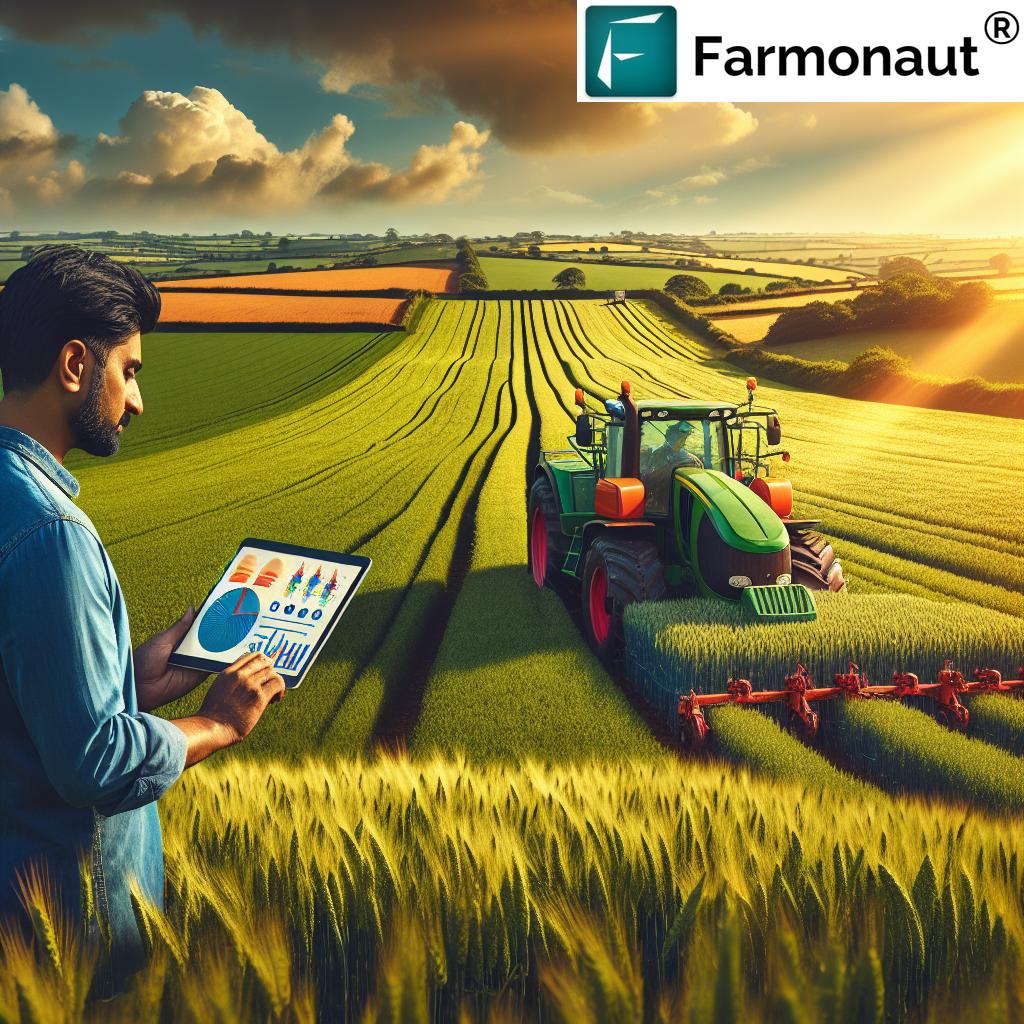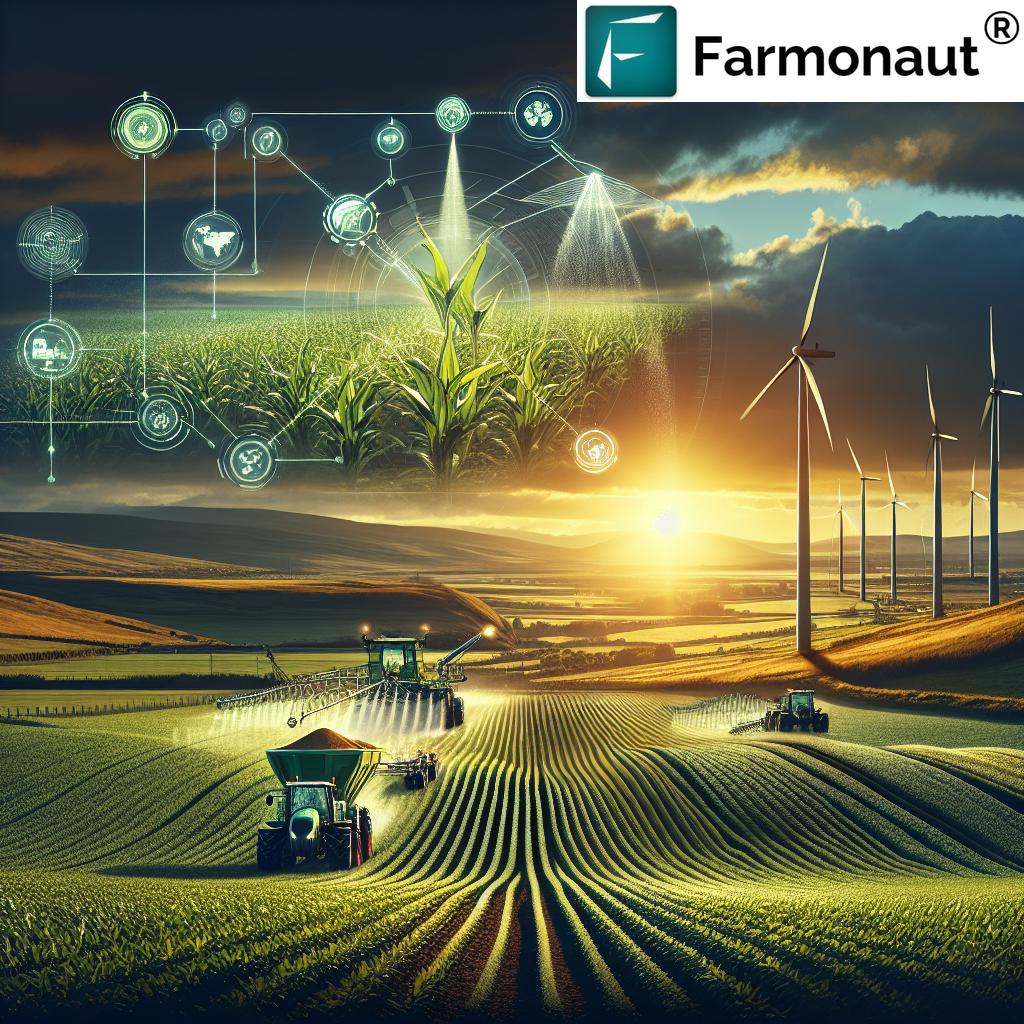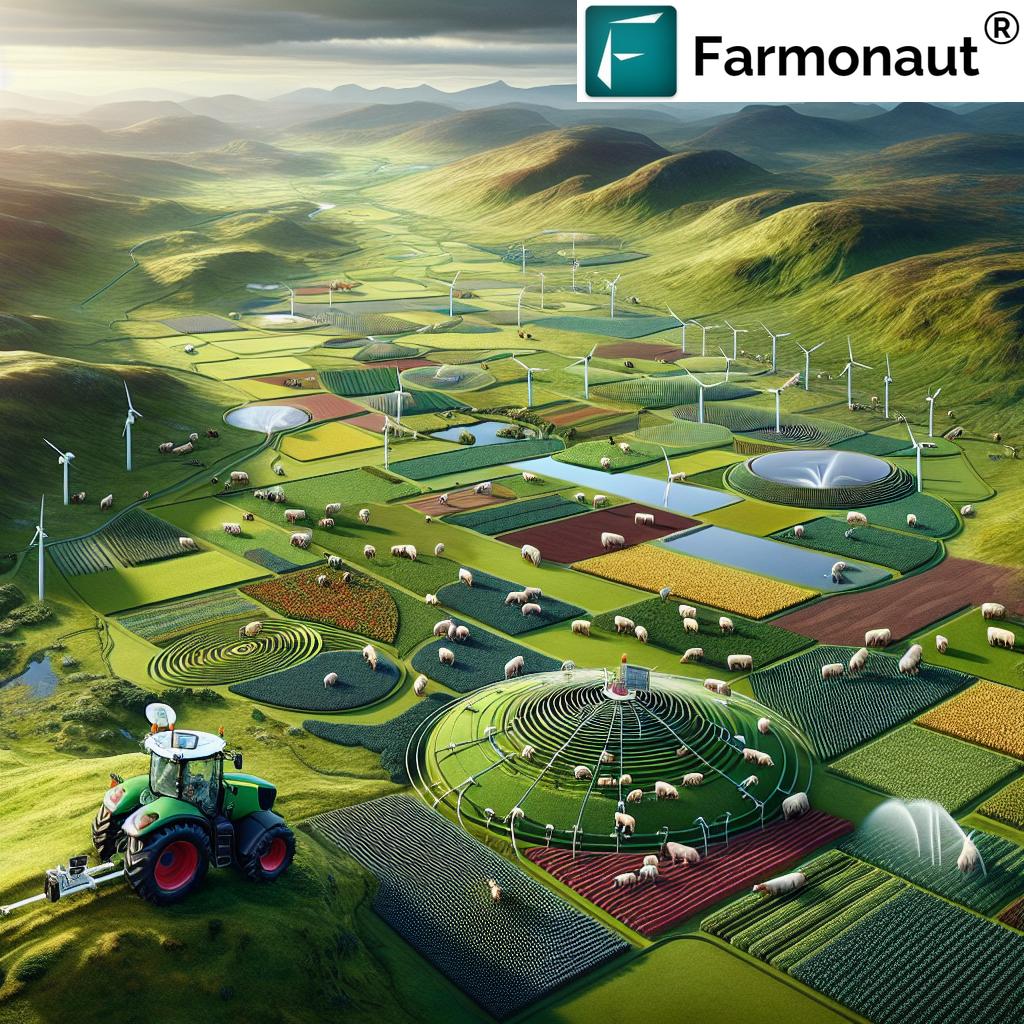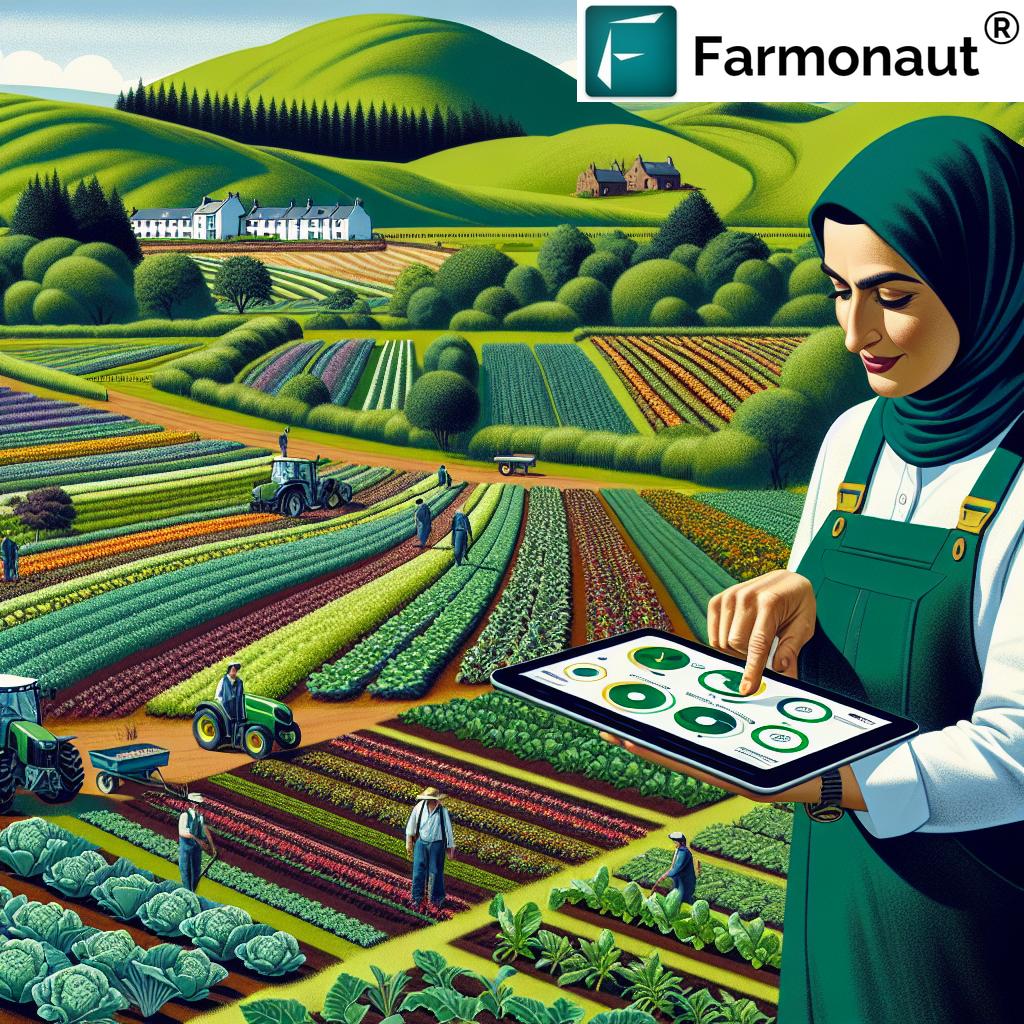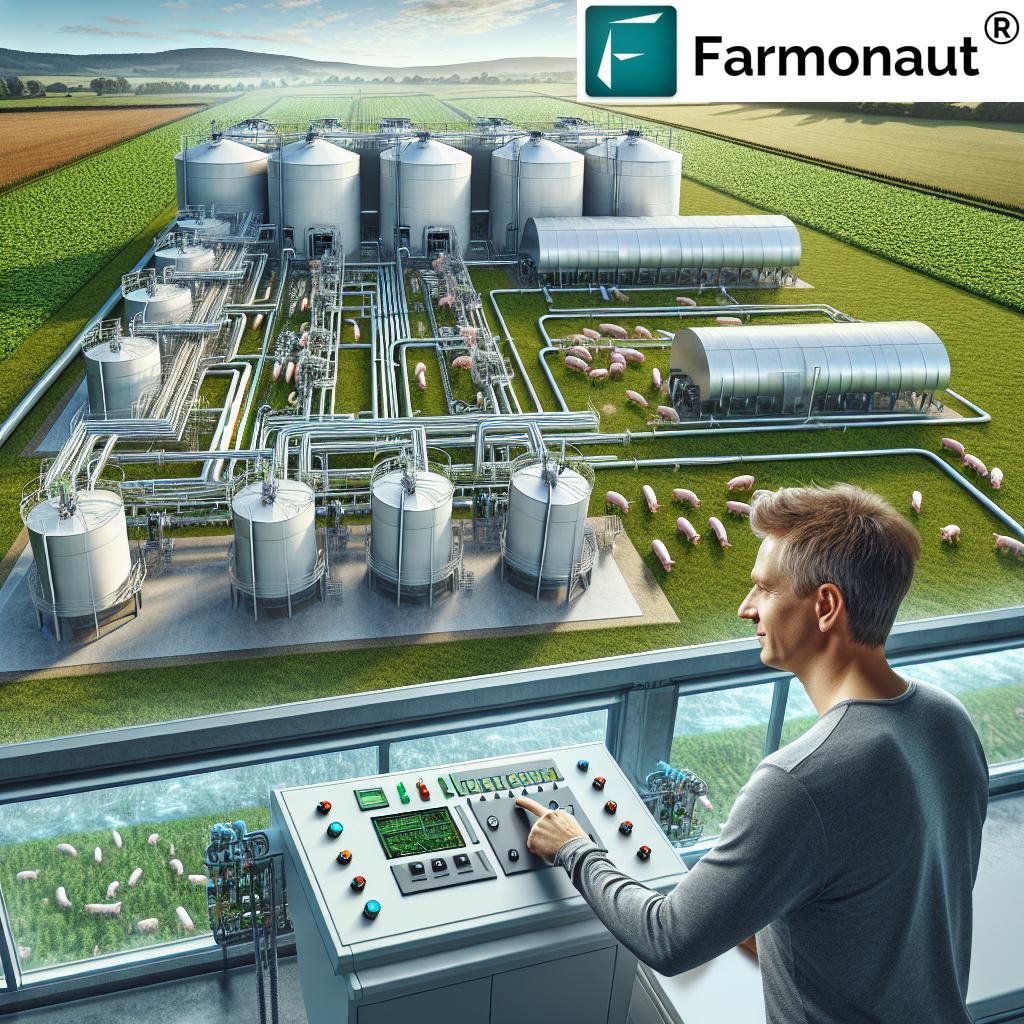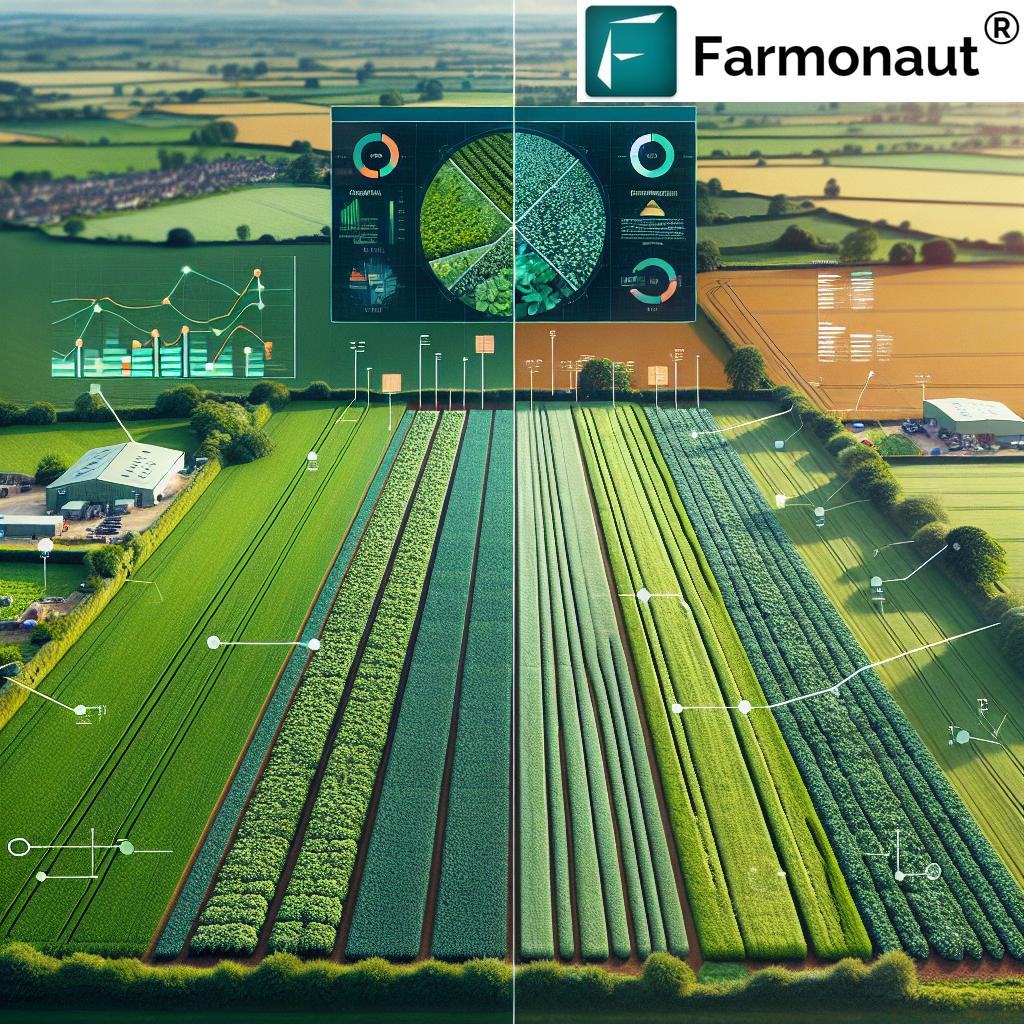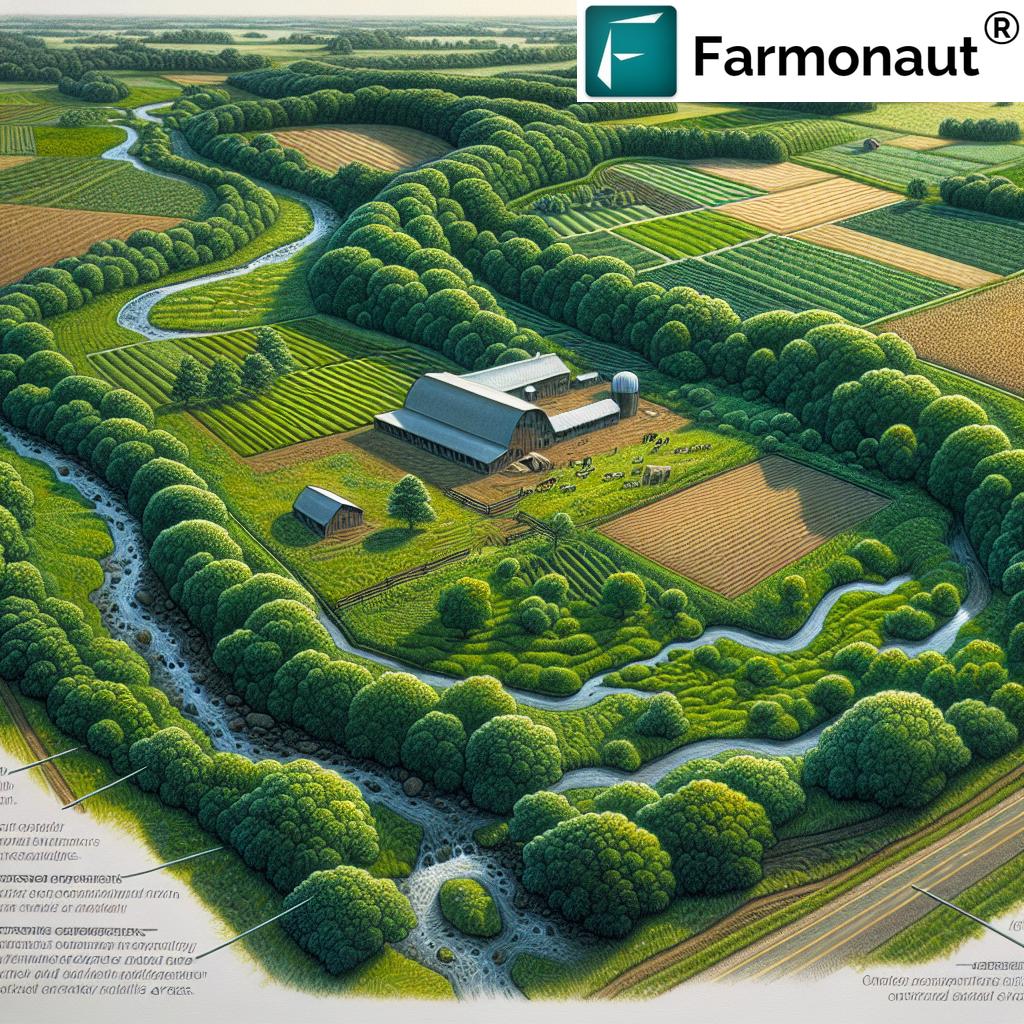Revolutionizing UK Farming: How Precision Agriculture Techniques Are Boosting Crop Yields and Reducing Input Costs
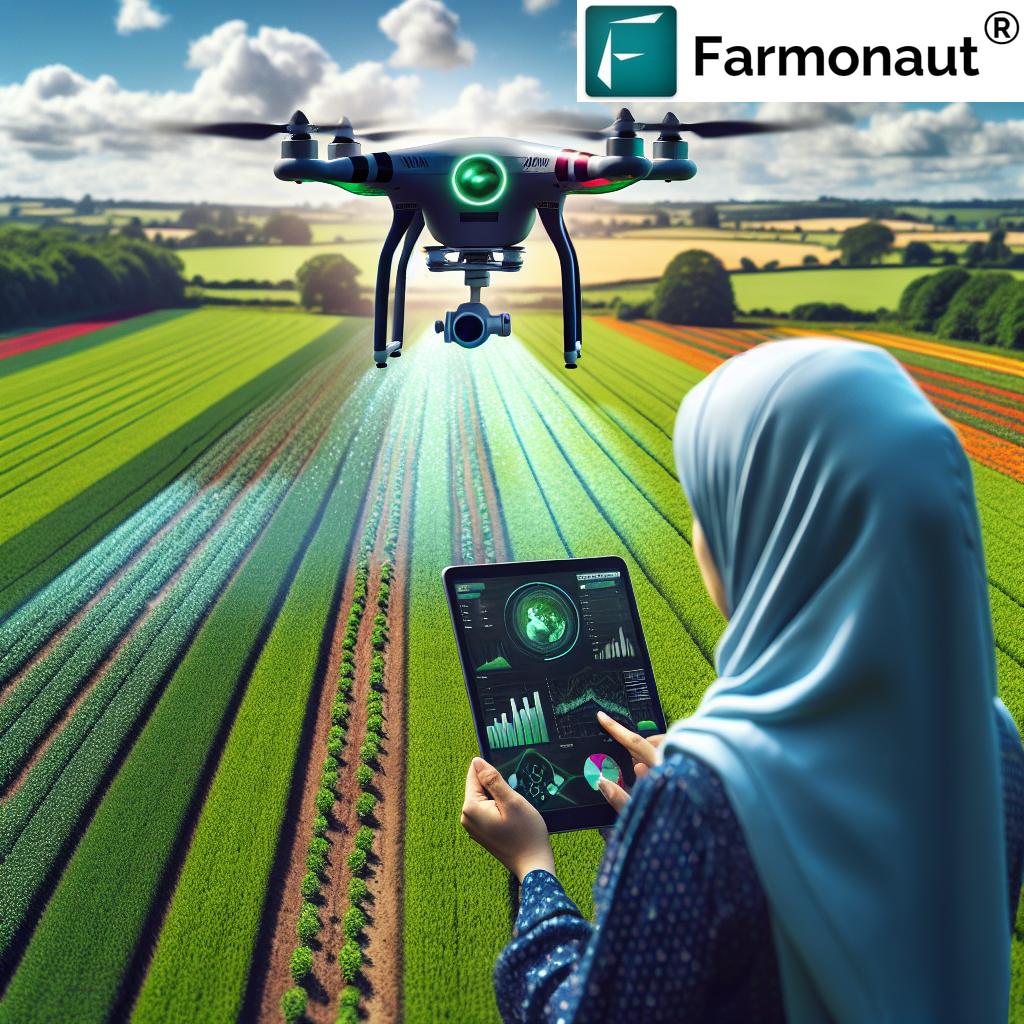
“Precision agriculture techniques have increased crop yields by up to 15% in some UK farms over the past 5 years.”
In recent years, the agricultural landscape of the United Kingdom and Ireland has undergone a remarkable transformation. As we delve into the world of modern farming, we’re witnessing a revolution driven by precision agriculture techniques that are reshaping the way we cultivate crops and manage our rural lands. This comprehensive exploration will take us through the latest trends in sustainable farming practices and cutting-edge agricultural technology solutions that are propelling the industry forward.
From the rolling hills of England to the lush green fields of Ireland, farmers are embracing innovative approaches to boost productivity while simultaneously reducing their environmental footprint. In this blog post, we’ll uncover how these advancements are not only optimizing crop yields but also addressing the pressing challenges of rising input costs and environmental conservation.
The Rise of Precision Agriculture in the UK and Ireland
Precision agriculture is at the forefront of the farming revolution in the UK and Ireland. This approach utilizes a combination of technologies to make farming more accurate and controlled. Let’s explore some of the key components driving this change:
- Satellite-based monitoring: Advanced imaging technologies provide farmers with real-time data on crop health and soil conditions.
- IoT sensors: These devices collect crucial information on moisture levels, temperature, and nutrient content in the soil.
- Data analytics: Powerful algorithms process vast amounts of data to provide actionable insights for farm management.
- Automated machinery: GPS-guided tractors and drones enable precise application of inputs and monitoring of large areas.
The adoption of these technologies is transforming the agricultural landscape, allowing farmers to make more informed decisions and optimize their operations like never before.
Soil Health Management: The Foundation of Sustainable Farming
Soil health management is a critical aspect of modern agriculture, particularly in the UK where centuries of intensive farming have impacted soil quality. Innovative techniques are now being employed to rejuvenate and maintain healthy soils:
- Cover cropping: Planting specific crops to improve soil structure and nutrient content during off-seasons.
- Minimal tillage: Reducing soil disturbance to preserve beneficial microorganisms and prevent erosion.
- Precision fertilization: Using soil testing and variable-rate technology to apply fertilizers only where needed.
- Crop rotation: Strategically alternating crops to balance nutrient uptake and reduce pest pressures.
These practices not only enhance soil fertility but also contribute to carbon sequestration, playing a crucial role in mitigating climate change impacts.
Smart Farming Systems: The Digital Revolution in Agriculture
Smart farming systems are revolutionizing the way UK and Irish farmers manage their operations. These integrated technologies provide unprecedented control and efficiency:
- Farm management software: Centralized platforms for monitoring and controlling all aspects of farm operations.
- Precision irrigation: Systems that deliver water exactly where and when crops need it, reducing waste.
- Automated climate control: For greenhouses and livestock facilities, ensuring optimal growing conditions.
- Robotic systems: For tasks like harvesting and weeding, increasing efficiency and reducing labor costs.
These smart systems are not just improving productivity; they’re also helping farms become more resilient to climate variability and market fluctuations.
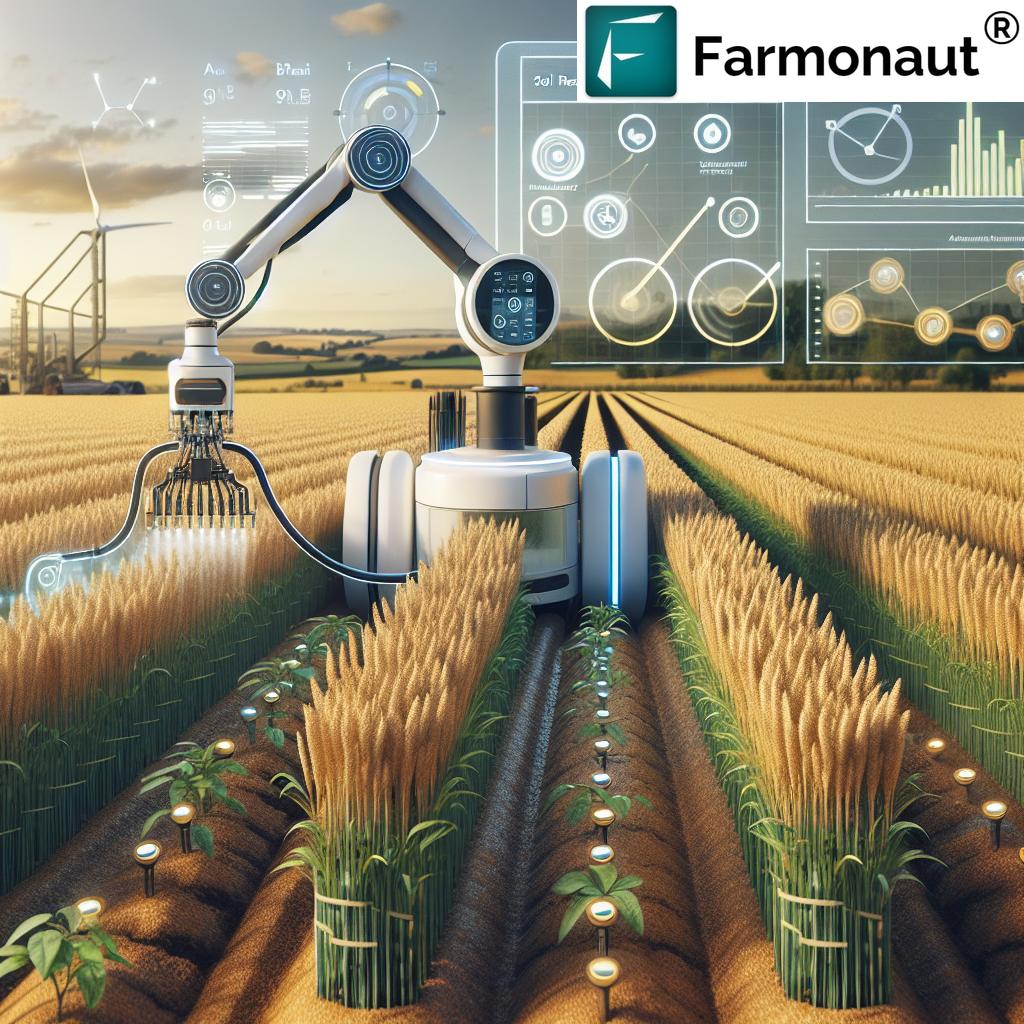
Crop Yield Optimization: Leveraging Data for Maximum Production
Crop yield optimization is a primary goal for farmers, and new technologies are making it more achievable than ever. Here’s how data-driven approaches are boosting harvests:
- Predictive analytics: Using historical data and weather forecasts to optimize planting and harvesting times.
- Variable rate seeding: Adjusting seed density based on soil conditions to maximize plant population and yield.
- Pest and disease forecasting: Early warning systems that help farmers take proactive measures against potential threats.
- Yield mapping: Creating detailed maps of crop productivity to identify areas for improvement.
By implementing these strategies, UK and Irish farmers are seeing significant increases in their crop yields while optimizing resource use.
“Digital farm management tools have helped reduce agricultural input costs by an average of 10% for early adopters in the UK.”
Precision Breeding: Enhancing Crop Resilience and Quality
Precision breeding is playing a crucial role in developing crops that are better suited to the UK and Irish climates and resistant to pests and diseases. This advanced approach to plant genetics is yielding impressive results:
- CRISPR gene editing: Creating crops with enhanced traits without introducing foreign DNA.
- Marker-assisted selection: Accelerating the breeding process by identifying desirable genetic markers.
- Genomic selection: Predicting plant performance based on genetic information, speeding up crop improvement.
- Hybrid vigor exploitation: Developing high-yielding hybrid varieties of key crops like wheat and barley.
These breeding techniques are particularly important for cereals and other arable crops, which form the backbone of UK agriculture.
Environmental Improvement in Farming: Balancing Productivity and Sustainability
Environmental improvement is a top priority for the UK and Irish agricultural sectors. Farmers are adopting practices that not only boost productivity but also enhance ecosystem services:
- Agroforestry: Integrating trees with crops or livestock to improve biodiversity and soil health.
- Precision chemical application: Reducing pesticide and herbicide use through targeted spraying.
- Water management: Implementing systems to capture and reuse water, reducing runoff and pollution.
- Renewable energy integration: Adopting solar, wind, and biomass technologies to power farm operations.
These initiatives are helping farms reduce their carbon footprint while maintaining high levels of productivity.
Digital Farm Management Tools: Streamlining Operations and Decision-Making
Digital farm management tools are transforming the way farmers handle day-to-day operations and long-term planning. These sophisticated platforms offer a range of benefits:
- Real-time monitoring: Tracking crop growth, livestock health, and equipment performance.
- Data-driven decision support: Providing insights and recommendations based on collected data.
- Supply chain management: Streamlining procurement and distribution processes.
- Compliance and record-keeping: Simplifying regulatory reporting and certification requirements.
By adopting these tools, UK and Irish farmers are improving efficiency and reducing administrative burdens.
Agricultural Input Cost Reduction: Maximizing Efficiency and Profitability
Agricultural input cost reduction is a critical concern for farmers facing rising expenses. Precision agriculture techniques are offering solutions:
- Variable rate technology: Applying inputs like fertilizers and pesticides only where needed, reducing waste.
- Energy-efficient equipment: Investing in machinery that consumes less fuel and electricity.
- Precision livestock farming: Using sensors and data analytics to optimize feed and healthcare for animals.
- Resource sharing platforms: Enabling farmers to share equipment and resources, reducing individual investment costs.
These strategies are helping UK and Irish farmers maintain profitability in the face of economic pressures.
Grassland Management: Innovating Pasture Production
Grassland management is crucial for livestock farmers in the UK and Ireland. New technologies are enhancing pasture productivity and sustainability:
- Satellite pasture monitoring: Using remote sensing to assess grass growth and quality.
- Rotational grazing systems: Implementing smart fencing and scheduling for optimal pasture use.
- Precision reseeding: Utilizing data to determine the best times and methods for pasture renewal.
- Nutrient management: Optimizing fertilizer application based on soil and plant needs.
These advancements are improving the efficiency of grass-based livestock systems, a cornerstone of UK and Irish agriculture.
The Future of Dairy Farming: Technology-Driven Transformation
The dairy sector in the UK and Ireland is embracing technological innovations to improve productivity and animal welfare:
- Robotic milking systems: Allowing cows to be milked on demand, improving comfort and yield.
- Wearable technology for cows: Monitoring health, activity, and reproductive status in real-time.
- Automated feeding systems: Providing precisely formulated rations to individual animals.
- Smart barn environments: Controlling temperature, humidity, and ventilation for optimal cow comfort.
These technologies are not only boosting milk production but also enhancing the sustainability of dairy operations.
Forestry and Agroforestry: Integrating Trees into Agricultural Landscapes
Forestry and agroforestry practices are gaining traction in the UK and Ireland as means to diversify farm income and enhance environmental benefits:
- Silvopasture systems: Combining tree cultivation with livestock grazing.
- Alley cropping: Planting rows of trees interspersed with agricultural crops.
- Precision forestry: Using remote sensing and data analytics for efficient forest management.
- Carbon credit schemes: Incentivizing tree planting for carbon sequestration.
These integrated approaches are helping to create more resilient and diverse agricultural landscapes across the UK and Ireland.
The Role of Government and EU Policies in Shaping Agricultural Innovation
Government policies and EU regulations play a crucial role in driving agricultural innovation in the UK and Ireland:
- Research funding: Substantial investments in agricultural R&D to develop new technologies.
- Environmental schemes: Incentives for farmers to adopt sustainable practices and technologies.
- Digital infrastructure: Improving rural connectivity to support the adoption of smart farming technologies.
- Regulatory frameworks: Adapting regulations to accommodate new breeding techniques and farming practices.
These policy initiatives are creating an enabling environment for the continued evolution of precision agriculture in the region.
Challenges and Opportunities in UK and Irish Agriculture
While precision agriculture offers numerous benefits, it also presents challenges that farmers and policymakers must address:
- Initial investment costs: The high upfront costs of adopting new technologies can be a barrier for some farmers.
- Digital skills gap: The need for training and education to help farmers fully utilize new technologies.
- Data privacy and security: Ensuring that farm data is protected and used responsibly.
- Balancing productivity and sustainability: Finding ways to increase yields while meeting environmental targets.
Addressing these challenges will be crucial for the continued success of precision agriculture in the UK and Ireland.
The Global Context: UK and Irish Agriculture in the International Arena
The advancements in UK and Irish agriculture are taking place within a broader global context:
- Export opportunities: Precision agriculture is enhancing the quality and competitiveness of UK and Irish agricultural exports.
- Knowledge transfer: Sharing innovations with other countries, particularly in the developing world.
- Climate change mitigation: Contributing to global efforts to reduce agriculture’s environmental impact.
- Food security: Enhancing the resilience of food systems in the face of global challenges.
By embracing precision agriculture, the UK and Ireland are positioning themselves as leaders in sustainable and efficient farming practices on the world stage.
Conclusion: A New Era for UK and Irish Agriculture
The revolution in precision agriculture techniques is ushering in a new era for farming in the UK and Ireland. From soil health management to smart farming systems, from precision breeding to digital farm management tools, these innovations are transforming every aspect of agricultural production. As we’ve explored throughout this article, these advancements are not only boosting crop yields and reducing input costs but also contributing to environmental improvement and sustainable farming practices.
The journey towards fully integrated precision agriculture is ongoing, with challenges to overcome and opportunities to seize. However, the potential benefits for farmers, consumers, and the environment are immense. As the UK and Ireland continue to lead in agricultural innovation, they are setting an example for sustainable and efficient farming practices that can be adopted worldwide.
The future of farming in these nations is bright, driven by technology, data, and a commitment to sustainability. As we look ahead, it’s clear that precision agriculture will play a pivotal role in ensuring food security, environmental stewardship, and rural prosperity for generations to come.
Recommended Table: Precision Agriculture Techniques: Impact on UK Farming
| Precision Agriculture Technique | Crop Yield Increase (%) | Input Cost Reduction (%) | Environmental Impact (Scale 1-5) | Adoption Rate in UK (%) |
|---|---|---|---|---|
| Soil Health Management | 10-15 | 5-10 | 4 | 35 |
| Smart Farming Systems | 15-20 | 10-15 | 4 | 25 |
| Precision Breeding | 20-25 | 5-8 | 3 | 40 |
| Digital Farm Management Tools | 8-12 | 12-18 | 3 | 45 |
| Grassland Management Technology | 12-18 | 8-12 | 4 | 30 |
FAQ Section
Q: What is precision agriculture?
A: Precision agriculture is a farming management concept that uses technology to observe, measure, and respond to variability in crops. It involves using GPS, sensors, robotics, and data analytics to optimize farming practices.
Q: How does precision agriculture benefit farmers?
A: Precision agriculture helps farmers increase crop yields, reduce input costs, improve sustainability, and make more informed decisions based on real-time data about their fields and crops.
Q: What are some examples of precision agriculture technologies?
A: Examples include GPS-guided tractors, drone imaging, soil sensors, variable rate technology for applying inputs, and farm management software.
Q: How is precision breeding different from traditional plant breeding?
A: Precision breeding uses advanced genetic techniques and data analysis to more quickly and accurately develop crop varieties with desired traits, compared to traditional breeding methods.
Q: What role does the government play in promoting precision agriculture?
A: Governments support precision agriculture through research funding, regulatory frameworks, environmental incentives, and infrastructure development to improve rural connectivity.
For more information on precision agriculture solutions, visit Farmonaut’s API or check out our API Developer Docs.





